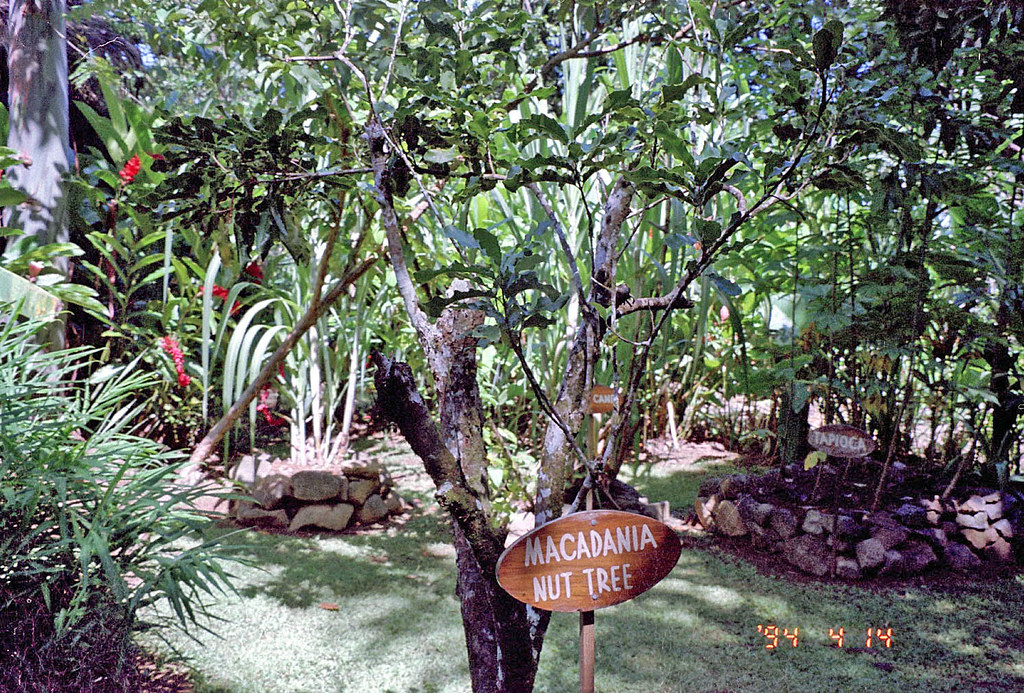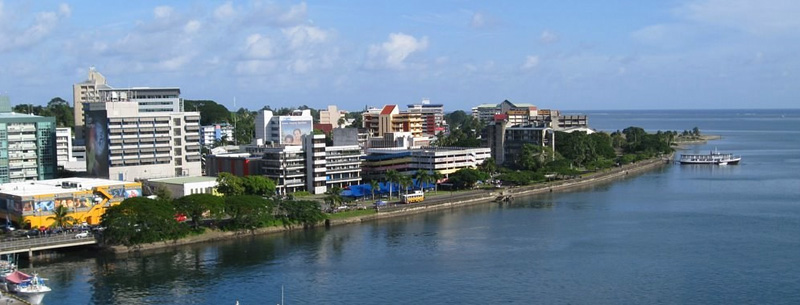Suva, Fiji Vacation Guide
Suva is an urban milieu of cultures and ethnicities. In the downtown district, modern shopping plazas sit side by side with colonial buildings, a breezy esplanade and an abundance of eateries. Off the main streets, you may feel like you have been transported to India in the jumble of bric-a-brac traders, curry houses and colorful sari shops. So many backgrounds converge in the city, making it a true celebration of diversity.
An exciting multi-racial, Suva began as a late Victorian village with frame houses and stores along the beachfront. Much of its past still survive, for there are many small, quaint wooden bungalows in the old section which sit in juxtaposition to the modern offices and shopping plazas. Suva is the only place in Fiji where you’ll see buildings taller than palm trees. Throughout the city are colorful flowering gardens and waving palm trees and on Sundays, it’s well worth attending church to hear the choral singing which is magnificent. Most churches have services in English, but none compare with the 1,000 strong Fijian services at Centenary Methodist Church on Stewart Street.
The best time to visit the capital is in July and August when the fire-walking festival is held at the Mariamma Temple. Fiji has a rich tradition of cultural rituals, and this is the most impressive of them all. Men walk with the poise of ballerinas over blazing pits of embers in a truly baffling display of courage. Known as “vilavilairevo,” or “jumping into the oven,” the Hindu custom coincides with the full moon to teach the faithful about discipline, seeing the good in everything and living a balanced life. The entire city is occupied by preparations for the month before the festival, making costumes and performing various ceremonies. There is no more special time to be in Suva, and although visitors may not traverse the glowing coals themselves, they often walk away with a new sense of spirituality after witnessing the incredible event.
A vital center, Suva offers a great selection of mountains including Chinese, Indian, traditional Fijian and European cuisine. There are tours to landmarks such as the Thurston Gardens, next to Government House, the official residence of the President of the Republic of Fiji. The museum is recognized as one of the best of its type in the South Pacific and not to be missed is the sprawling complex of municipal markets near the waterfront, which comes to life on Fridays and Saturdays. Here you’ll find an assortment of artifacts and handicrafts for sale, made by Fijians throughout the island group.
Other religions play a large role in the culture of Suva as well. One of the capital’s most prominent landmarks is the Roman Catholic Cathedral that stands on the corner of Pratt and Murray streets. Built in 1902, the cathedral was made from sandstone imported from Australia and designed after European houses of worship. The boat-shaped interior of the Holy Trinity Cathedral is also worth exploring. The peaceful retreat is filled with Fijian tapestries, and its grounds showcase native Pacific plants like ferns and cacti. The bright orange and blue Shree Laxmi Narayan Temple is also open to visitors.
There is Fiji’s oldest cultural center at Orchid Island near Suva where visitors get the chance to see some of Fiji’s unique fauna and flora. And for those who like history, there’s Albert Park where Charles Kingsford-Smith landed the ‘Southern Cross’ on his trans-Pacific flight in 1928. Some 50 kilometers west of Suva is Pacific Harbour. This joins the easternmost fringe of the Coral Coast. Her visitors can visit the Na Fijian Cultural Centre and Dance Theatre with its demonstrations of handicraft-making techniques. Not too far from here, you can visit the legendary Beza Island, home of the Fijian fire walkers who often perform their fire-walking ceremonies at several major Fijian hotels and resorts.

The country’s religion, culture, archeology, politics and people can be better understood after visiting the Fiji Museum. The diverse collection paints a vivid picture of traditional life through jewelry, musical instruments, cooking tools, war clubs and more. The massive Ratu Finau takes center stage. The double-hulled canoe is a spectacular feat of engineering and a wonderful example of Fiji’s design tradition.
Suva is just as rich in natural beauty as it is in culture. Teeming with tropical flora and melodic birdlife, Colo-i-Suva Forest Park features more than six kilometers of hiking trails that take visitors past gorgeous vistas, natural pools and dense patches of mahogany. The rainforest is one of the city’s greatest treasures, home to 14 different bird species, including barking pigeons, scarlet robins, Fiji warblers, breasted musk parrots and others.
More compact but no less beautiful are the Thurston Gardens. The lack of heavy landscaping maintains the tropical element, and colorful vegetation spills over nearly every inch of the grounds. Avid horticulturalists will appreciate the detailed labels, tired travelers will find relief on the many benches, and everyone will enjoy the dense display of native flora.
Suva Geographical Location
Suva is located on the southeast coast of the island Viti Levu. It is the largest city in Fiji with a population of approximately 89,000.
Suva Language
English and Fijian are the official languages of Fiji. Fijian is spoken as a first language by approximately half of the population while most others speak it as a second language.
Suva Predominant Religion
- 55.5% Protestant
- 28% Hindu
- 9% Roman Catholic
- 6% Muslim
- 0.5% Sikh
- 0.5% Other
- 0.5% None
Fiji strives to recognize every religion and thus has many public holidays celebrating important days for each religious group.
Suva Currency
The Fijian Dollar is the official currency of Fiji.
Suva Climate
Suva has a tropical rainforest climate with high levels of precipitation throughout the year and consistently hot temperatures.
Suva Main Attractions
- Fiji Museum
- Suva Municipal Market
- Municipal Handicraft Center
Other Attraction in Suva
- Colo-I-Suva Forest Park
- Albert Park
- Government Buildings
